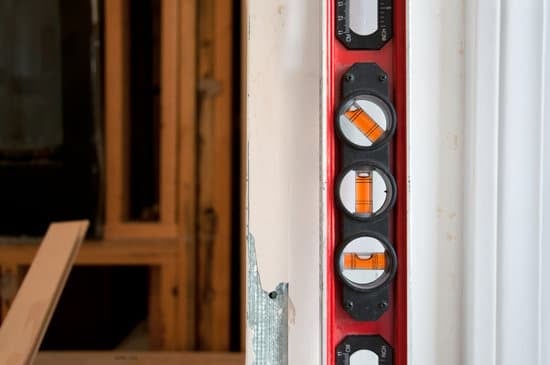Can you include home improvements in mortgage? Many homeowners often wonder if it’s possible to wrap the cost of home improvements into their mortgage. In this article, we will delve into the concept of including home improvements in a mortgage and explore why homeowners may want to consider this option. Understanding the process, benefits, drawbacks, eligible home improvements, and alternatives will also be discussed to provide a comprehensive guide for homeowners considering financing their home improvements through their mortgage.
Homeownership comes with the opportunity to personalize and enhance your living space through various renovations and upgrades. However, funding these projects can be challenging for many homeowners. Including home improvements in a mortgage is an option that allows homeowners to finance these projects within their mortgage loan. This can provide convenience and potentially lower interest rates compared to other financing options.
Understanding how homeowners can include home improvements in their mortgage, along with the requirements and steps involved, is essential for those considering this option. In addition to exploring potential drawbacks and considerations homeowners should be aware of before making this decision, we will also discuss the advantages of wrapping home improvement costs into a mortgage.
By weighing these pros and cons, homeowners can make an informed decision about whether including home improvements in their mortgage aligns with their financial goals and needs. Whether it’s kitchen remodels, bathroom renovations, or energy-efficient upgrades, eligible home improvements that can be included in a mortgage will also be outlined to guide homeowners through the process of determining which projects are suitable for financing through their mortgage loan.
Understanding the Process
When it comes to including home improvements in a mortgage, homeowners have the option to pursue a renovation loan or a refinance loan to cover the costs. The process begins with assessing the potential improvements and determining the total cost, which will then be factored into the new mortgage. To navigate this process effectively, homeowners should consider the following steps:
1. Assessing Eligibility: Before pursuing home improvement financing through a mortgage, homeowners must ensure they meet the eligibility requirements set by lenders. This may include having a certain amount of equity in their homes, a good credit score, and a stable income.
2. Choosing the Right Loan Program: There are various loan programs available for including home improvements in a mortgage, such as FHA 203(k) loans and Fannie Mae HomeStyle Renovation mortgages. Each program has its own specific requirements and benefits, so it’s important for homeowners to research and compare their options before making a decision.
3. Working with Lenders and Contractors: Once eligibility is confirmed and a loan program is chosen, homeowners need to engage with lenders and contractors to finalize the details of their home improvement project. This involves obtaining quotes from contractors, submitting plans to lenders for approval, and establishing a timeline for the renovations.
By understanding these key steps involved in including home improvements in a mortgage, homeowners can make informed decisions about how to proceed with their renovation projects. It’s essential to consult with financial advisors or mortgage professionals to ensure that all requirements are met, and that the process goes smoothly from start to finish.
Benefits of Including Home Improvements in Mortgage
When homeowners are considering making improvements to their homes, they may want to explore the option of including those costs in their mortgage. There are several advantages to wrapping home improvement expenses into a mortgage, making it an attractive option for many individuals. Some of the key benefits include:
- Convenience: By including home improvement costs in a mortgage, homeowners can streamline the financing process and avoid the need for separate loans or lines of credit.
- Lower interest rates: Mortgages typically offer lower interest rates compared to other forms of financing, allowing homeowners to save money on interest over time.
- Potential tax benefits: In some cases, the interest paid on a mortgage that includes home improvement costs may be tax-deductible, providing potential savings for homeowners.
These benefits make including home improvements in a mortgage an appealing option for individuals looking to finance renovation projects while taking advantage of favorable terms and potential financial incentives.
Before proceeding with this approach, it’s important for homeowners to consider potential drawbacks and factors that may impact their overall cost and monthly payments. By understanding both the advantages and considerations involved, individuals can make informed decisions about whether including home improvements in a mortgage is the right choice for them.
Drawbacks and Considerations
When considering including home improvements in a mortgage, homeowners must carefully weigh the potential drawbacks and considerations before moving forward with this financing option. While there are notable benefits to wrapping home improvement costs into a mortgage, it is crucial to understand the impact it may have on monthly payments and the overall cost of the loan.
Impact on Monthly Payments
One of the primary drawbacks of including home improvements in a mortgage is the impact it can have on monthly payments. By adding the cost of renovations to the mortgage, homeowners will likely see an increase in their monthly payment obligations. This can strain their budget and may lead to financial stress if not carefully planned for.
Overall Cost Considerations
In addition to potentially higher monthly payments, homeowners should also consider the overall cost of including home improvements in a mortgage. When factoring in the interest over the life of the loan, wrapping home improvement costs into a mortgage can result in paying significantly more for those upgrades compared to other financing options. It’s important for homeowners to carefully calculate and compare the total cost before making a decision.
Risk of Negative Equity
Another consideration when including home improvements in a mortgage is that it could put homeowners at risk of negative equity if property values decline. If they owe more on their mortgage than what their home is worth due to added renovation costs, this could pose challenges if they need to sell or refinance in the future. Therefore, it’s essential for homeowners to conduct thorough research and consider future market conditions before proceeding with this financing option.
Eligible Home Improvements
When considering including home improvements in a mortgage, it’s important to understand what types of renovations and upgrades are eligible for this financing option. Homeowners have the opportunity to include a wide range of home improvements in their mortgage, allowing them to finance these projects alongside their home purchase or refinance. Understanding which types of improvements qualify for inclusion in a mortgage can help homeowners make informed decisions about their housing investments.
Kitchen Remodels
Kitchen remodels are one of the most popular home improvement projects that homeowners choose to include in their mortgage. From updating outdated appliances and cabinetry to installing new countertops and flooring, a kitchen remodel can significantly enhance the functionality and aesthetic appeal of a home. By including the costs of these renovations in a mortgage, homeowners can spread out the expense over the life of the loan, making it easier to manage financially.
Bathroom Renovations
Bathroom renovations are another common type of improvement that can be included in a mortgage. Whether it’s updating fixtures, replacing worn-out tiling, or adding modern amenities such as heated flooring or spa-like showers, investing in bathroom renovations can not only improve the comfort of the home but also increase its overall value. Including these improvements in a mortgage allows homeowners to finance these projects without having to pay for them out-of-pocket.
Energy-Efficient Upgrades
Energy-efficient upgrades, such as installing solar panels, upgrading insulation, or replacing windows with energy-efficient models, are also eligible for inclusion in a mortgage. These types of improvements not only lower energy bills but also contribute to reducing the home’s environmental footprint. Financing energy-efficient upgrades through a mortgage can be particularly advantageous as they may lead to long-term cost savings and potential tax benefits for homeowners.
How to Determine the Value of Home Improvements
When considering home improvements, it is essential for homeowners to carefully assess the value of the proposed projects to determine if they are a worthwhile investment. Evaluating the potential return on investment (ROI) can help homeowners make informed decisions about which improvements to prioritize and how to fund them. There are several factors that homeowners should consider when determining the value of home improvements, including the impact on property value, energy efficiency, and overall quality of life.
One way to determine the value of home improvements is to assess their impact on property value. Certain upgrades, such as kitchen remodels, bathroom renovations, and curb appeal enhancements, are known to have a positive effect on a home’s resale value. Homeowners can research local real estate market trends and consult with real estate professionals to gain insight into which improvements are most likely to increase their home’s overall worth.
Another important consideration when evaluating the value of home improvements is their potential impact on energy efficiency. Upgrades such as installing energy-efficient windows, upgrading insulation, or investing in solar panels can not only reduce utility costs but also enhance the eco-friendliness of a home. Homeowners should weigh the initial investment in these improvements against the long-term savings they can provide in terms of lower energy bills.
Overall quality of life is also an important factor when determining the value of home improvements. Projects that improve comfort, functionality, and aesthetics can significantly enhance homeowners’ enjoyment of their living spaces. While these improvements may not always translate directly into increased property value, they can contribute to an improved quality of life for homeowners and their families.
| Factors to Consider | Importance |
|---|---|
| Impact on Property Value | High |
| Energy Efficiency | Moderate |
| Quality of Life Improvement | Moderate |
Alternatives to Including Home Improvements in Mortgage
When considering home improvements, homeowners may explore alternative financing options instead of including the costs in their mortgage. Personal loans are an attractive option for those looking to finance smaller projects as they typically require minimal paperwork and can be approved quickly. Additionally, personal loans do not require collateral, making them a viable choice for homeowners who may not have significant equity in their homes.
Another alternative financing option for home improvements is a home equity loan, which allows homeowners to borrow against the equity in their property. This type of loan typically offers lower interest rates compared to personal loans or credit cards, making it a cost-effective choice for larger renovation projects. Home equity loans also provide the added benefit of potential tax deductions on the interest paid, providing further financial advantages for homeowners.
Cash-out refinancing is another avenue to consider when seeking financing for home improvements. This option enables homeowners to refinance their existing mortgage and take out a new loan that is larger than their outstanding balance.
The excess funds can then be used to cover the costs of home renovations or upgrades. While cash-out refinancing may result in higher overall loan balances and monthly payments, it can be advantageous for homeowners looking to secure funds at a lower interest rate than other forms of borrowing.
| Financing Option | Key Benefits |
|---|---|
| Personal Loans | Minimal paperwork, quick approval process, no collateral required |
| Home Equity Loans | Lower interest rates, potential tax deductions on interest paid |
| Cash-Out Refinancing | Funds at lower interest rate than other forms of borrowing. |
Tips for Successful Home Improvement Financing
When considering including home improvements in a mortgage, it’s crucial for homeowners to navigate the process with care and attention to detail. One important tip for successful home improvement financing is to work with reputable contractors. It’s essential to thoroughly vet potential contractors, checking their credentials, references, and reviews. By working with trustworthy professionals, homeowners can ensure that their home improvement projects are completed to a high standard, minimizing the risk of costly mistakes or subpar workmanship.
In addition to working with reputable contractors, another practical tip for homeowners considering including home improvements in their mortgage is to get multiple quotes. Obtaining quotes from several different contractors allows homeowners to compare prices, services, and timelines.
This can help them make more informed decisions about which contractor to hire and ensure they are getting a fair price for the home improvement project. By comparing multiple quotes, homeowners can also potentially negotiate better terms or pricing with the chosen contractor.
Furthermore, it’s advisable for homeowners to have a clear budget in mind when considering including home improvements in their mortgage. Establishing a realistic budget and sticking to it can help prevent overspending on home improvement projects. By carefully managing finances and setting limits on spending, homeowners can avoid taking on more debt than they can comfortably afford. This financial discipline will ultimately contribute to successful home improvement financing and a positive outcome for the homeowner.
Conclusion
In conclusion, including home improvements in a mortgage can be an attractive option for homeowners looking to finance renovations and upgrades. By wrapping the costs of home improvements into a mortgage, homeowners can benefit from the convenience of a single monthly payment, potentially lower interest rates compared to traditional financing options, and even potential tax benefits. However, it is important for homeowners to carefully consider the impact on their monthly payments and overall cost before making a decision.
While including home improvements in a mortgage can offer numerous advantages, such as streamlining the financing process and providing access to lower interest rates, there are also potential drawbacks and considerations to keep in mind. Homeowners should carefully assess the value of the proposed home improvements to ensure they are making a worthwhile investment that will enhance the overall value and enjoyment of their property.
Ultimately, whether to include home improvements in a mortgage is a decision that should be made after careful consideration and evaluation of alternative financing options. Homeowners are encouraged to explore all available avenues for financing home improvements, including personal loans, home equity loans, and cash-out refinancing, before making a final decision. By weighing the benefits and drawbacks of each option and seeking professional advice when necessary, homeowners can make informed choices regarding their home improvement financing needs.
Frequently Asked Questions
Can I Add to My Mortgage for Home Improvements?
Yes, you can add to your mortgage for home improvements through a few different methods. One option is to refinance your existing mortgage and take out additional funds for the improvements. Another option is to apply for a home equity loan or home equity line of credit (HELOC) which allows you to borrow against the equity in your home.
Both of these options can provide the funds needed for renovations or improvements while potentially allowing you to take advantage of favorable interest rates. It’s important to carefully consider the costs and terms associated with each option before making a decision.

I’m thrilled to have you here as a part of the Remodeling Top community. This is where my journey as an architect and remodeling enthusiast intersects with your passion for transforming houses into dream homes.





